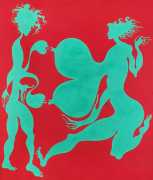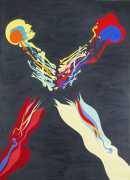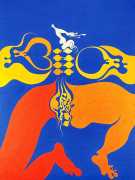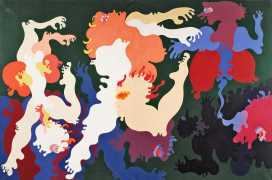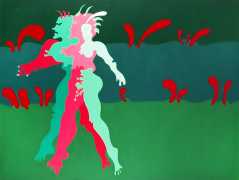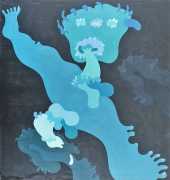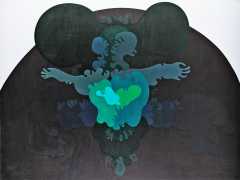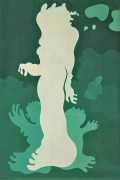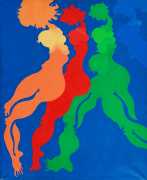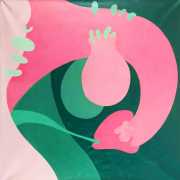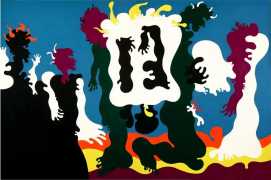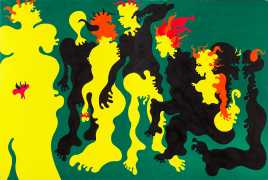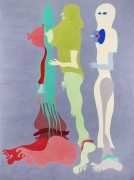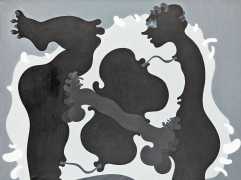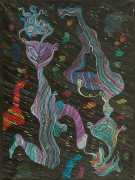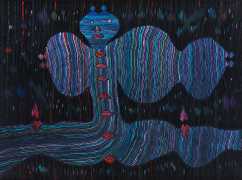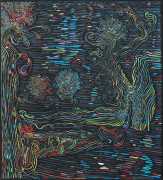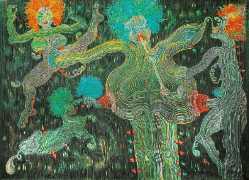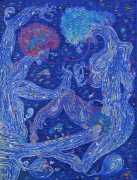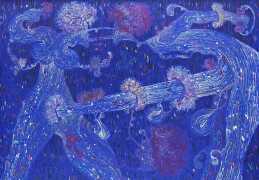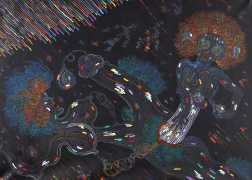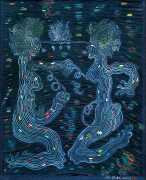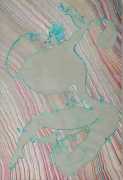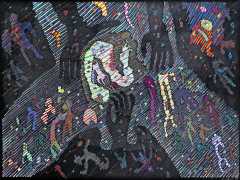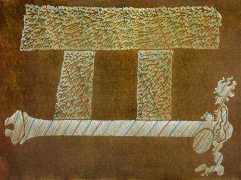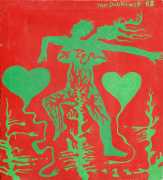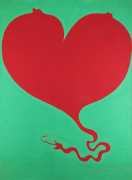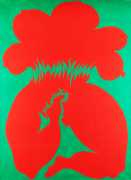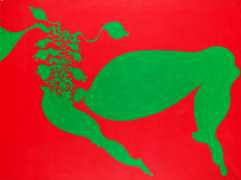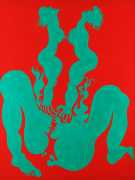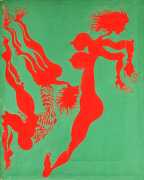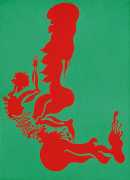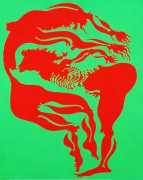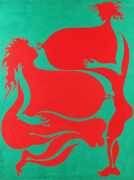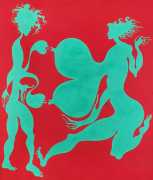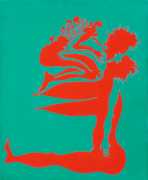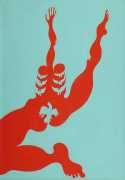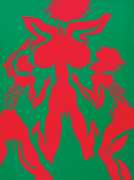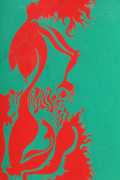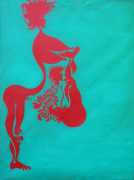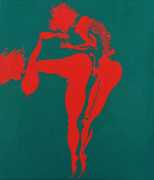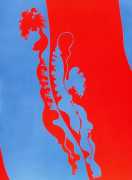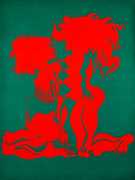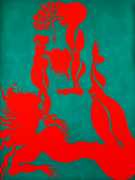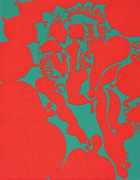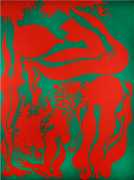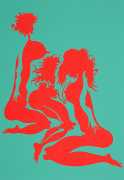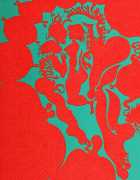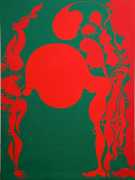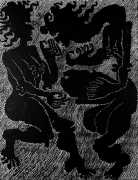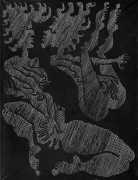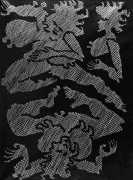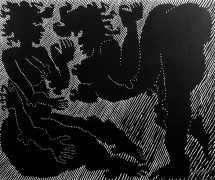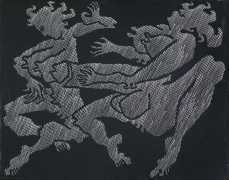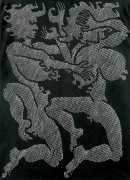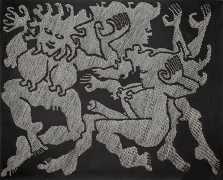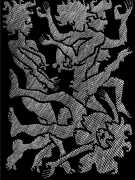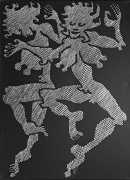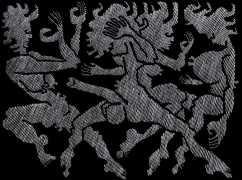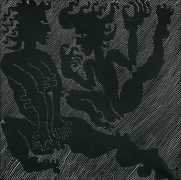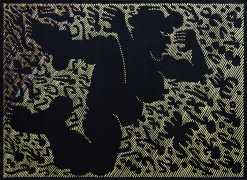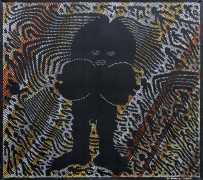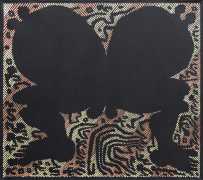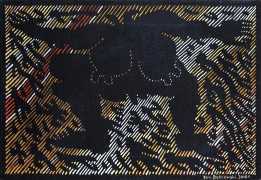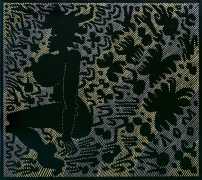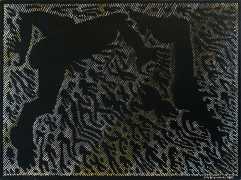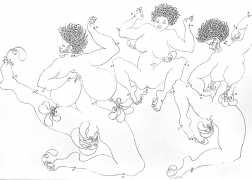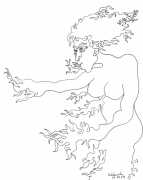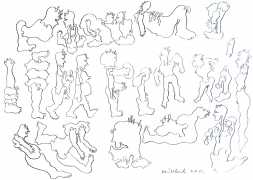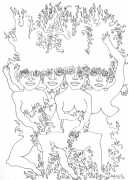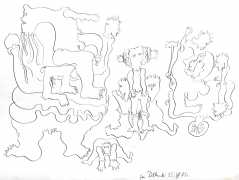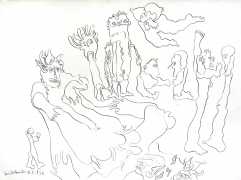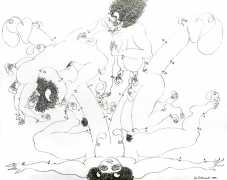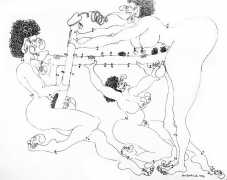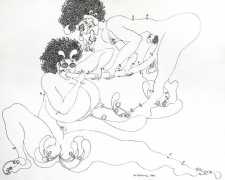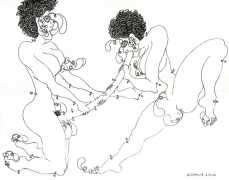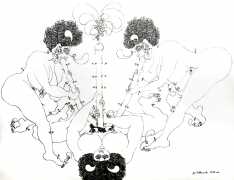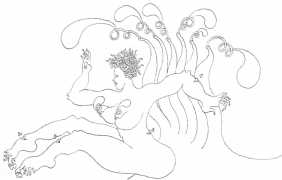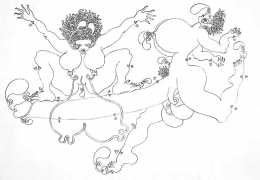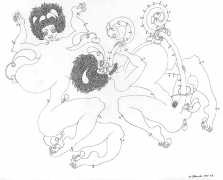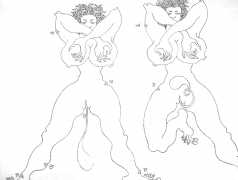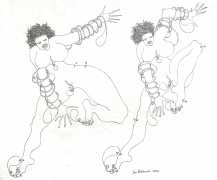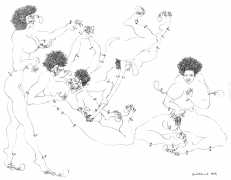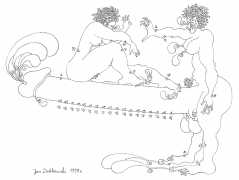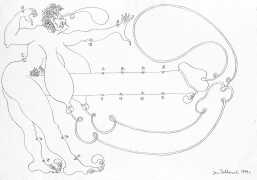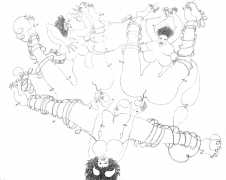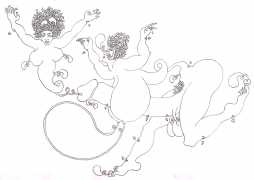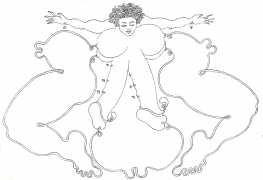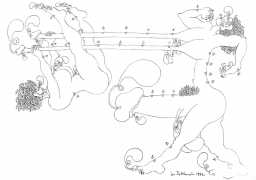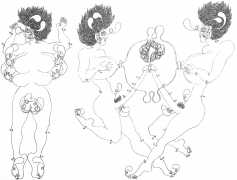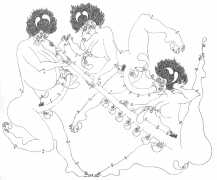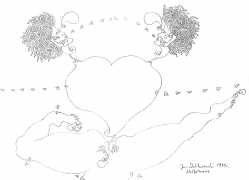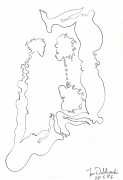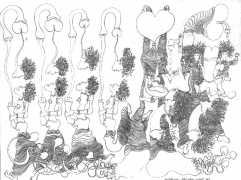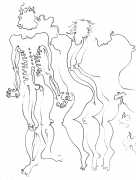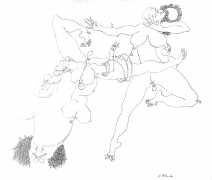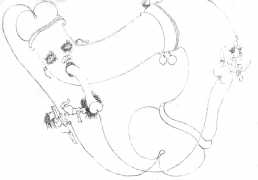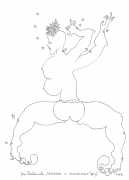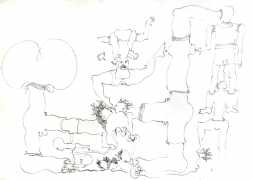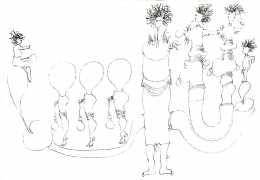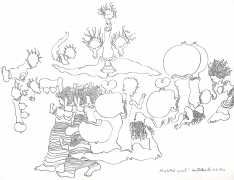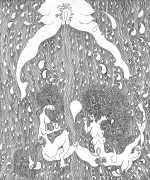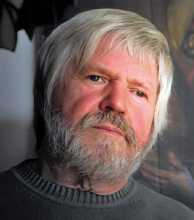 The Polish artist Jan Dobkowski grew up in the north-eastern town of Łomża, and from 1962 to 1968 studied art at the Akademia Sztuk Pięknych (Academy of Fine Arts) in Warsaw, a student of the outstanding post-impressionist Jan Cybis. At the time the dominant way of painting practised at Polish Universities placed an emphasis on nuanced colouring and thick texture layers of paint, but Dobkowski quickly developed a more minimalist style bordering on Pop Art, limiting his palette to a small number of colours applied without any differentiation of tone, creating precise, clean canvases. The same simplicity also dominated his drawings, which are very much a complement of the paintings.
The Polish artist Jan Dobkowski grew up in the north-eastern town of Łomża, and from 1962 to 1968 studied art at the Akademia Sztuk Pięknych (Academy of Fine Arts) in Warsaw, a student of the outstanding post-impressionist Jan Cybis. At the time the dominant way of painting practised at Polish Universities placed an emphasis on nuanced colouring and thick texture layers of paint, but Dobkowski quickly developed a more minimalist style bordering on Pop Art, limiting his palette to a small number of colours applied without any differentiation of tone, creating precise, clean canvases. The same simplicity also dominated his drawings, which are very much a complement of the paintings.
During his fourth year of studies, Dobkowski became friends with Jerzy Zieliński (Jurry), who was also rebelling against pseudo-impressionism. In 1967 the pair officially announced the establishment of their Neo-Neo-Neo group, suggesting that in art nothing was ever really new. Dobkowski and Zieliński exhibited together until 1970, when due to differences between the artists the group ceased to exist. Dobkowski regularly showed paintings with primary colours in stark contrast, with representations of naked bodies stylised in sinuous patterns.
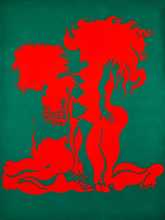
Having exhibited widely in Poland, in 1968 Dobkowski’s paintings were included in the prestigious Polskie Malarstwo Współczesne: Źródła i Poszukiwania (Contemporary Polish Painting: Sources and Searches) exhibition in Paris, and soon afterwards the Guggenheim Museum in New York purchased a red and green painting, a canvas entitled Podwójna dziewczyna (Double Girl), for its collection.
For many years the main elements of Dobkowski’s paintings were human bodies, mostly in bold primary colours, but during the early 1980s he started introducing more colour, creating paintings of both figures and landscapes in a distinctive style using streaks of paint in his own version of pointillism, a network of delicate lines which flow in streams to fill the whole surface.
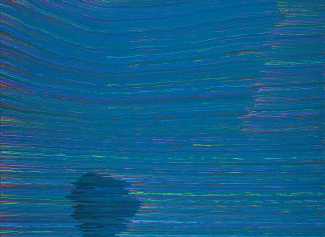
A stay in the USA in 1972 was made possible with a scholarship from the Kościuszko Foundation, where Dobkowski presented figures cut from coloured plexiglass at the Bodley Gallery; further periods abroad expanded both his output and his audience. He spent most of the years between 1985 and 1989 travelling, to France, Spain, South America, Greece, Israel and Finland. As he explains, ‘The creation of a painting is the process of becoming self-conscious of building of my world of art, in which the process of creating the earth and the universe play an important part; the creation of cultures and relationships follow naturally. Creation is a constant birth, and for me genesis is a reflection of the existing and eternally changing world. I try to travel a lot in order to get to know all these worlds.’
Jan Dobkowski is unashamedly also an artist of the life erotic: ‘We need to open our eyes and bodies to the sun and sky,’ he says, ‘to breathe in the smell of the earth. It’s nature which shows us that we exist. Within naturalism there is a resource that makes my art alive, which is why I choose to present people naked, without attributes of culture or civilisation, women and men in their eternal gestures. Through eroticism I want to show how much a human desires nature, and that that desire is good.’
We would like to thank our Russian friend and contributor Yuri for introducing us to the work of this artist and supplying many of the images.

